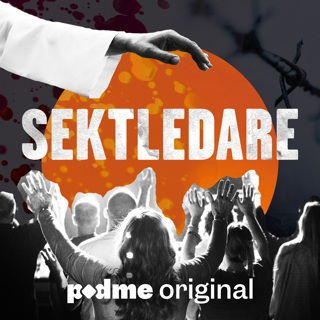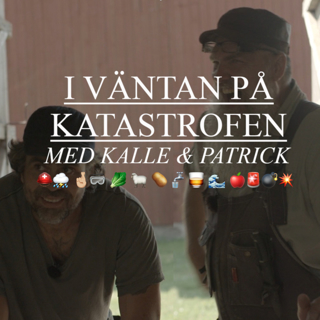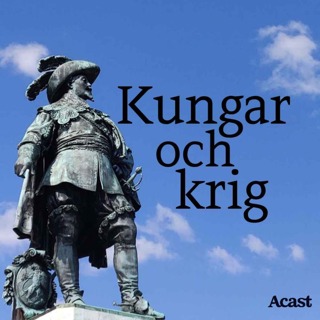
Ep. 330 Early Days and Evolution of the TIPS Procedure with Dr. Richard Saxon
In this episode, guest host Dr. Isabel Newton interviews Dr. Richard Saxon about his innovative approach of using stent grafts for transjugular intrahepatic portosystemic shunting (TIPS), the creation of the Viatorr endoprosthesis, and medical ethics of experimental technology. --- CHECK OUT OUR SPONSORS Philips Image Guided Therapy Devices Academy https://resource.philipseliiteacademy.com Boston Scientific Nextlab https://www.bostonscientific.com/en-US/nextlab.html?utm_source=oth_site&utm_medium=native&utm_campaign=pi-at-us-nextlab-hci&utm_content=n-backtable-n-backtable_site_nextlab_1_2023&cid=n10013202 --- SHOW NOTES As an IR fellow, Dr. Saxon was surrounded by constant innovation at the Dotter Institute. He saw the takeoff of TIPS as a last treatment option for patients with liver failure, who were suffering from major variceal bleeding. He recounts the early days of TIPS as extremely technically challenging and arduous, since the methods and devices had not yet been refined. Dr. Saxon spent a significant amount of time performing TIPS revision procedures, which led him to explore the underlying pathology of biliary duct injury and subsequent stent thrombosis. These experiences led him to develop a stent graft for TIPS, which was first tested in swine models and eventually became the Viatorr endoprosthesis. Dr. Saxon highlights the supportive people and environment at the Dotter Institute as a major factor in fueling TIPS improvement. Additionally, during this era, innovative ideas were able to flourish with less influence of medical-legal or intellectual property disputes. In today’s clinical setting, TIPS has become a good option for patients with intractable variceal bleeding, but it is no longer the only option. Dr. Newton emphasizes that patient selection is a crucial part of ensuring that IRs continue to practice safely and effectively. The doctors discuss hepatic encephalopathy, another complication of TIPS that requires careful patient screening, adequate follow up, and collaboration with the medicine side of liver disease treatment. Finally, Dr. Saxon reflects on his career in translational research. A large part of his success has come from recognizing where his passions lie, what his current work environment can support, and maintaining a constant drive to improve procedures and clinical care. --- RESOURCES Gore Viatorr TIPS Endoprosthesis: https://www.goremedical.com/products/viatorr/resource-library Stent-Grafts for Revision of TIPS Stenoses and Occlusions: A Clinical Pilot Study: https://www.jvir.org/article/S1051-0443(97)70606-7/fulltext Barry Uchida on the BackTable Podcast: https://www.backtable.com/shows/vi/podcasts/122/history-of-the-tips-procedure-an-interview-with-barry-uchida
9 Juni 20231h 5min

Ep. 329 OBLs, Past, Present, and Future with Dr. Bill Julien
In this episode, host Dr. Aparna Baheti interviews Dr. Bill Julien about the evolution of the outpatient based lab (OBL), its role in expanding patient access to IR care, and its relationship with other IR practice models around the country. --- CHECK OUT OUR SPONSORS Boston Scientific Ranger DCB https://www.bostonscientific.com/en-US/medical-specialties/vascular-surgery/drug-eluting-therapies/ranger.html?utm_source=oth_site&utm_medium=native&utm_campaign=pi-at-us-de_portfolio-hci&utm_content=n-backtable-n-backtable_site_ranger_1_2023&cid=n10012340 Philips SymphonySuite https://www.philips.com/symphonysuite --- SHOW NOTES Dr. Julien is one of the initial OBL founders in the United States. In 2001, he started his current practice, South Florida Vascular Associates in an effort to practice independent IR. At this time, he struggled to get hospital privileges due to exclusive diagnostic radiology contracts, so he placed a C-arm in his office out of necessity. Eventually, he built a formal angio suite. As a result, patients enjoyed the efficiency and comfort of office based procedures, and he enjoyed physician autonomy and freedom from hospital politics. Dr. Julien notes that overtime, CMS has recognized the value of an office-based intervention and saw that IRs could practice high-quality care at a lower price point with higher patient satisfaction, leading to improved Medicare reimbursements. Since the conception of his OBL, Dr. Julien has seen practice structures change, especially with the influence of venture capital firms and the pressure to generate RVUs. Additionally, though some voices have pushed for more IR involvement in the clinical sphere, there has not been much progress made in advocating for IR hospital privileges. This is a significant barrier to independent IR practices, since some states require that an IR has hospital privileges before opening an OBL. Dr. Julien says that this dilemma is unique to IR, since other specialties, such as vascular surgery and cardiology, are not affected by exclusive contracts to the same extent. He believes that IR societies and leading voices should actively challenge the legal basis of these contracts and support interventionalists who want to stay independent. We highlight recent SIR and ACR position statements on this topic. Finally, Dr. Julien offers advice to IRs who are seeking to enter the OBL setting. He encourages them to perform and learn from as many procedures as possible, find ways to develop and maintain clinical skills, identify mentors, and ensure that their restrictive covenants are not too stringent. --- RESOURCES South Florida Vascular Associates: https://www.southfloridavascular.com/ Outpatient Endovascular and Interventional Society (OEIS): https://oeisweb.com/ SIR Position Statement on Exclusive Contracts: https://www.sirweb.org/globalassets/aasociety-of-interventional-radiology-home-page/practice-resources/standards_pdfs/exclusive_contracts_policy_final_approved_9-21-15.pdf ACR Position Statement on Exclusive Contracts: https://www.acr.org/-/media/ACR/Files/About-ACR/2022-2023-Digest-of-Council-Actions.pdf Line Monkey MD- “The IR Startup:” https://linemonkeymd.com/the-ir-startup/ Line Monkey MD- “Pseudoexclusive Radiology Contracts:” https://linemonkeymd.com/pseudoexclusive-radiology-contracts-our-downfall/#comment-2087
5 Juni 202352min

Ep. 328 Adrenal Vein Sampling with Dr, Fritz Angle
In this episode, host Dr. Aparna Baheti interviews Dr. Fritz Angle about adrenal vein sampling, including indications, workup, and his technique for accessing the right adrenal vein. --- CHECK OUT OUR SPONSOR RADPAD® Radiation Protection https://www.radpad.com/ --- SHOW NOTES Dr. Fritz Angle is the Director of Interventional Radiology at the University of Virginia. He frequently performs adrenal vein sampling for primary hyperaldosteronism, and has developed a specific technique. The patient is usually referred from an endocrinologist or primary care doctor. The IR should review the labs to verify the aldosterone-to-renin ratio is greater than 20. Additionally, it is important to review medications and stop all potassium sparing diuretics at least two weeks before the procedure. If they haven’t had a CT scan, the IR should order one to assess the position of the right adrenal vein, the hardest to access due to its variable anatomy. The morning of the procedure, Dr. Angle always checks a potassium level to know whether to give potassium supplements. He gets dual femoral access, so that he can obtain both non-stimulated and ACTH-stimulated samples. He obtains the sample from the left adrenal vein first. For the right side, he starts with a C2 catheter, to which he adds side holes using a biopsy needle. The left adrenal vein is almost always one vertebral body above the right renal vein, so he begins here, with the catheter pointing directly posterior. He searches around the entire back wall of the IVC by puffing contrast and rotating the catheter. He moves up and down by half a vertebral level. If he still cannot locate it, he begins looking to the left and right. When injecting, it is important to be gentle. To do this, he inserts an 014 wire through his catheter, then does a dry scan to see if the vein is pointing toward the liver or the right adrenal gland. If the vein is injected too hard, it can cause a venous infarct and adrenal insufficiency. The right adrenal vein forms an upside down Y shape. Dr. Angle draws two sets each from the right and left adrenal veins and two peripheral samples. To interpret results, look for a cortisol of 2-3x greater (3-4x greater in stimulated samples) compared to the peripheral blood to confirm correct placement in the adrenal veins. Once you correct aldosterone levels to cortisol levels, the aldosterone-to-cortisol ratio should be about 5x greater on one side (compared to the other side) to confirm the diagnosis and lateralize the hyperaldosteronism to one side. About 2 ⁄ 3 cases lateralize, but Dr. Angle has found many patients’ symptoms are actually due to bilateral adrenal hyperplasia. Finally, Dr. Angle emphasizes that this is an easy, safe procedure that all IRs should offer.
2 Juni 202336min

Ep. 327 Building a Pain Interventions Service Line with Dr. Stephen Hunt
In this episode, host Dr. Michael Barraza interviews Dr. Stephen Hunt about building a pain practice, including his nerve ablation technique, how to obtain referrals, and why it is one of the most rewarding procedures that he does. --- SHOW NOTES We begin by discussing what caused Dr. Hunt to start building a pain service. He was treating many patients with lung cancer, and he saw so many patients toward the end of their life. What they wanted was to reduce their suffering due to pain. He saw what was being offered for them, which was opioids, but this caused them to be disconnected from their families at such an important time in their life. He knew he could offer nerve blocks and ablation, so he began educating himself. As he learned about different blocks, he adapted them to create his own technique. Pretty soon, word got out that he was doing this, and he started getting referrals from oncologists. Soon after this, thoracic surgeons and breast surgeons began referring to him for post-thoracotomy and post-mastectomy pain. Next, radiation oncologists referred their patients with radiation necrosis of the ribs, and orthopedic surgeons referred patients to him for pain from musculoskeletal metastases. For his technique, he often starts with a test block using bupivacaine and triamcinolone, which prolongs the effect of the bupivacaine and provides relief for around two weeks. For the ablation, he does the block in the same way, waits 15 minutes, and then injects ethanol to ablate the nerve. Some tips he has learned for celiac ablation are to ablate the retrocrural splanchnic nerves, because they feed into the celiac, and you will get a better result. Other areas he commonly ablates are intercostal nerves. For these, to avoid devastating paralysis from damage to the spinal cord, he always orients his needle lateral and stays at least two inches away from the spine. He advises those new in pain interventions to remember your anatomy. In radiology, we learn it all, and if you remember these nerves, you will be able to help a lot of people with their pain and decrease their suffering, making an enormous impact on someone’s quality of life. --- RESOURCES PIGI Lab: https://www.med.upenn.edu/pigilab/ Twitter: @PigiLab @md_rogue
29 Maj 202332min

Ep. 326 Healthcare Policy and Advocacy with Dr. Anahita Dua
In this episode, host Dr. Ally Baheti interviews vascular surgeon Dr. Anahita Dua on the importance of political advocacy in healthcare, including why she created a PAC, the importance of healthcare workers in Congress, and how you can get involved. --- CHECK OUT OUR SPONSORS Boston Scientific Eluvia Drug-Eluting Stent https://www.bostonscientific.com/en-US/medical-specialties/vascular-surgery/drug-eluting-therapies/eluvia.html?utm_source=oth_site&utm_medium=native&utm_campaign=pi-at-us-de_portfolio-hci&utm_content=n-backtable-n-backtable_site_eluvia_1_2023&cid=n10012337 Reflow Medical https://www.reflowmedical.com/ --- SHOW NOTES Dr. Dua is a vascular surgeon at Massachusetts General Hospital, associate professor of surgery at Harvard Medical School, co-director of the Peripheral Arterial Disease Center, Clinical Director of Research, the Director of the Vascular Lab and the Associate Director of the Wound Care Center. Her passion is limb salvage, and she performs open and endovascular techniques. She was born in Scotland, grew up in Wisconsin, completed medical school in the UK followed by general surgery residency at the Medical College of Wisconsin, vascular surgery fellowship at Stanford, a post-doctoral research fellowship at UT Houston, and finally an MBA and Masters in trauma sciences. She is also a wife, mom of two, and recently created a political action committee (PAC). Before creating a PAC, she initially considered running for Congress. She was tired of seeing injustices both on the healthcare side with her patients, as well as in her own family. She bought a bulletproof backpack for her daughter after a school shooting near where they live, and since that day, she has not stopped fighting for change. Instead of running for Congress herself, she decided to create a PAC with the goal of getting 10 people in Congress who shared her ideas about the change needed in this country. She raised money, surpassed her goal, and got two people in Congress in just one month. She knew she had to pick a side to get anywhere with the current state of politics in this country, so she decided to support someone only if they were a healthcare worker and a Democrat. She chose candidates based on their policies and their personality. She spoke with each one to get a sense of who they were, and she was looking for people who were intelligent, nimble, and who she would trust to babysit her kids. She then called a list of colleagues, informed them who she was supporting, and asked for their financial support. Dr. Dua hopes to have an impact on healthcare reform by creating advice specific to diseases such as diabetes. There is no standardization for limb problems, and this leads to disparities in care, with staggeringly unequal rates of amputations among different racial and socioeconomic groups. She aims to develop a standard of care that is implemented federally to improve limb care and reduce amputations. --- RESOURCES Healthcare for Action: www.healthcareforaction.com
26 Maj 202342min

Ep. 325 Recovering From a Major Injury as a Proceduralist with Dr. Deepak Sudheendra
In this episode, host Dr. Ally Baheti interviews Dr. Deepak Sudheendra about obstacles that he has faced while practicing medicine, including dealing with a career-threatening injury, redefining boundaries between clinical and home responsibilities, and navigating a transition from a surgical to radiology residency. --- CHECK OUT OUR SPONSORS Medtronic Ellipsys Vascular Access System https://www.medtronic.com/ellipsys RADPAD® Radiation Protection https://www.radpad.com/ --- SHOW NOTES Dr. Sudheendra has recently returned to his clinical IR practice. He had taken one year off to recover from a traumatic fall that resulted in multiple fractures and loss of function in his left hand and arm. The recovery process was physically arduous, requiring intensive physical and occupational therapy multiple times a week to re-learn basic functions. As an IR that was 100% procedural, Dr. Sudheendra faced a lot of uncertainty about whether he would ever be able to return to performing complex procedures. Additionally, he faced the stress of battling with insurance companies for his rightful disability insurance payments. The paperwork process required him to submit case logs and attestations from co-workers to prove his prior case volume. Through this experience, Dr. Sudheendra is able to give disability insurance advice for young physicians and graduating trainees. Buying an insurance plan before residency or fellowship ends will allow the trainee to pay a lower premium than if they were attendings. It is important to read the fine print in the contracts that are offered and consider buying both short-term and long-term insurance, since there is no way to predict the timing and severity of a future injury. Additionally, buying into multiple plans can lower the total annual premium, but it comes with the added stress of having to deal with multiple companies when an injury does occur. As Dr. Sudheendra returned to clinical practice, he started with locums in community hospitals. He found that easing back into simple IR procedures allowed him to not only gain his confidence back, but also invest more time into his family. His next endeavor is opening his own office-based lab (OBL) focused on vascular interventions. To end the episode, we discuss Dr. Sundheendra’s perspective on navigating his career. He originally started in a cardiothoracic surgery residency, but decided to leave the field to pursue interventional radiology. This switch was not simple, and it required years of researching and advocating for himself to different residency programs. On this journey, he was able to attain his diagnostic radiology residency and interventional radiology fellowship positions through persistence and networking. Overall, Dr. Sudheendra advises procedurally-oriented medical students and early trainees to expose themselves to all related subspecialty areas, think about new developments in those fields, and imagine how the field might change in the course of their careers. --- RESOURCES Dr. Deepak Sudheendra Website: https://www.gethealthyveins.com/ Dr. Deepak Sudheendra Twitter: https://twitter.com/Dr_Sudi/with_replies Physician Moms Group on Facebook: https://www.facebook.com/groups/PhysicianMomsGroup/
22 Maj 20231h

Ep. 324 Embolization for Treatment of Hemorrhoids with Dr. Alex Pavidapha
In this episode, host Dr. Aaron Fritts and interventional radiologist Dr. Alex Pavidapha give a primer on the emerging field of hemorrhoidal artery embolization (HAE), including patient presentations and referrals, treatment algorithms, procedural steps, and follow up care. --- CHECK OUT OUR SPONSOR Boston Scientific Nextlab https://www.bostonscientific.com/en-US/nextlab.html?utm_source=oth_site&utm_medium=native&utm_campaign=pi-at-us-nextlab-hci&utm_content=n-backtable-n-backtable_site_nextlab_1_2023&cid=n10013202 --- SHOW NOTES To start. Dr. Pavidapha describes the typical patient presenting with hemorrhoids. This is a prevalent condition that peaks at the ages of 45-65 and in the pregnant population. There are a variety of treatment options ranging from banding, hemorrhoidectomy, and cryotherapy; however, many patients may experience recurrence after these treatments or they may not be suitable candidates for surgery. Next, we discuss the current landscape of HAE. This treatment is a good option for patients who have failed other treatment options. The majority of Dr. Pavidapha’s patients come from referrals by gastroenterologists, although some come based on their own research on the web. It is important that all patients have a colonoscopy before HAE, to rule out the possibility of colon cancer. Additionally, a full history and rectal exam should be performed, since the choice to treat can be guided by the patient’s symptom severity and the degree of internal hemorrhoid prolapse. It is also advisable to identify extremely painful external hemorrhoids, since these can be addressed with conservative measures. Dr. Pavidapha notes that patient counseling is extremely important, since hemorrhoids have a high risk of recurrence and bowel habits play a large part in this. In terms of procedural risks, he counsels patients about standard risks of bleeding and infection, recurrence, mild pain in the few days after the procedure, and although it is rare, non-target embolization of skin or other organs. During the procedure, Dr. Pavidapha prefers femoral access, since this is the easiest way to select the internal mesenteric artery. He does a base catheter run here to visualize the superior rectal arteries. These vessels are the most commonly involved in internal hemorrhoids, and if they are feeding the hemorrhoid, he will inject 500 micron beads and then follow with embolic coils. Next, he navigates through the internal iliac and pudendal arteries to arrive at the middle rectal arteries for another run. If they also supply the hemorrhoids, he will embolize them. The inferior rectal arteries are usually not involved in hemorrhoid formation, embolization of them carries a high risk of skin necrosis. Treatment of inferior rectal arteries is usually avoided. It is important to know typical anatomy very well so you can determine targets for embolization and recognize whether a patient has variant anatomy. Finally, Dr. Pavidapha sees his patients for follow-up at 1 month, 4 months, and 1 year to check for symptomatic improvement, primarily decreased bleeding. If bleeding has worsened, the patient most likely needs a repeat procedure to identify new blood vessels supplying the hemorrhoid. To IRs who are interested in starting an HAE service line, Dr. Pavidapha advises them to read the existing literature about hemorrhoids and HAE and be able to show clinical outcomes data to gastroenterologists. Overall, patients with recurrent hemorrhoids are typically an underserved population and have the potential to benefit from this novel procedure. --- RESOURCES Ep. 319 - How to Collaborate with GI on a New Outpatient Service Line: https://www.backtable.com/shows/vi/podcasts/319/how-to-collaborate-with-gi-on-a-new-outpatient-service-line Outcomes of Hemorrhoidal Artery Embolization from a Multidisciplinary Outpatient Interventional Center: https://pubmed.ncbi.nlm.nih.gov/36736822/ The STREAM Meeting: https://www.thestreammeeting.com/
19 Maj 202340min

Ep. 323 El Camino Evolucionario de Francisco Carnevale: La Chispa que Encendió la Embolización de la Próstata
En los confines de la medicina, a veces es necesario un espíritu intrépido para desafiar las prácticas establecidas y abrir nuevos horizontes. El reconocido doctor Francisco Carnevale, una figura emblemática en el campo de la radiologia intervencionista, personifica a la perfección esta audacia. Su historia es la epopeya de un hombre que tuvo la inquietud de explorar la embolización de la próstata, un enfoque innovador en el tratamiento de la hiperplasia prostática. --- CHECK OUT OUR SPONSOR RADPAD® Radiation Protection https://www.radpad.com/ --- SHOW NOTES Como un faro de curiosidad intelectual, el Dr. Carnevale se aventuró en el mundo desconocido de la embolización de la próstata. Con pasión y determinación, navegó a través de los océanos de investigación médica, desafiando la ortodoxia y enfrentando el escepticismo. Fue un viaje lleno de obstáculos y dificultades, pero cada paso que dio fue impulsado por la convicción de que estaba abriendo puertas a nuevas posibilidades de tratamiento. Su dedicación inquebrantable dio frutos. El Dr. Carnevale no solo superó los desafíos técnicos asociados con la embolización de la próstata, sino que también cosechó resultados impresionantes. Sus intervenciones se convirtieron en un éxito rotundo, aliviando el sufrimiento de muchos pacientes y mejorando su calidad de vida. Sus habilidades quirúrgicas y su enfoque innovador se ganaron el reconocimiento de sus colegas, quienes lo consideran un líder en el campo de la urología.Además de sus logros clínicos, el Dr. Carnevale ha dejado una huella imborrable en la comunidad médica a través de sus numerosas investigaciones y publicaciones. Sus contribuciones han ayudado a sentar las bases científicas de la embolización de la próstata, inspirando a otros profesionales a seguir su ejemplo y continuar expandiendo los límites del conocimiento médico. En resumen, la historia del Dr. Francisco Carnevale es una historia de coraje, determinación y éxito. Su viaje desde la inquietud inicial hasta convertirse en un modelo a seguir en investigación y publicaciones es un testimonio de la pasión y el espíritu de vanguardia que impulsa la medicina moderna. Su legado perdurará, iluminando el camino para las generaciones futuras de profesionales de la salud y dejando un impacto duradero en la comunidad médica.
17 Maj 202349min





















